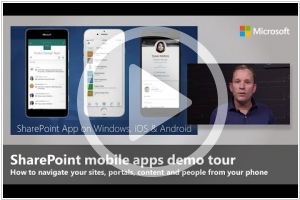Microsoft Viva vs SharePoint
April 01, 2024 | Author: Michael Stromann
7
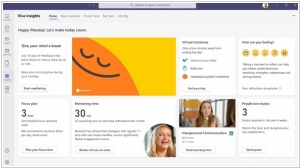
Microsoft Viva is an employee experience platform that brings together communications, knowledge, learning, resources, and insights in the flow of work. Powered by Microsoft 365 and experienced through Microsoft Teams, Viva fosters a culture that empowers employees and teams to be their best from anywhere.
59

SharePoint's multi-purpose platform allows for managing and provisioning of intranet portals, extranets and websites, document management and file management, collaboration spaces, social networking tools, enterprise search, business intelligence tooling, process/information integration, and third-party developed solutions. SharePoint can also be used as a web application development platform.
Microsoft Viva and SharePoint are both Microsoft platforms focused on improving employee productivity and collaboration, but they have key differences in terms of their purpose and functionality. SharePoint is a robust content management and collaboration platform that enables organizations to create and manage intranet sites, document libraries, workflows, and team sites. It offers features for document sharing, version control, co-authoring, and integration with other Microsoft tools. SharePoint is designed to centralize information, enhance team collaboration, and improve document management within an organization.
On the other hand, Microsoft Viva is an employee experience platform that aims to empower and engage employees by providing a centralized hub for knowledge, learning, communication, and insights. It consists of four modules: Viva Connections, Viva Learning, Viva Topics, and Viva Insights. Viva Connections integrates with SharePoint to deliver a personalized employee experience through a dashboard-like interface. Viva Learning provides access to learning content and resources from various sources. Viva Topics leverages AI to organize and discover knowledge across the organization, while Viva Insights offers data-driven insights to support well-being, productivity, and collaboration.
See also: Top 10 Enterprise Portals
On the other hand, Microsoft Viva is an employee experience platform that aims to empower and engage employees by providing a centralized hub for knowledge, learning, communication, and insights. It consists of four modules: Viva Connections, Viva Learning, Viva Topics, and Viva Insights. Viva Connections integrates with SharePoint to deliver a personalized employee experience through a dashboard-like interface. Viva Learning provides access to learning content and resources from various sources. Viva Topics leverages AI to organize and discover knowledge across the organization, while Viva Insights offers data-driven insights to support well-being, productivity, and collaboration.
See also: Top 10 Enterprise Portals
Microsoft Viva vs SharePoint in our news:
2023. Microsoft ditches Yammer brand and goes all-in on Viva Engage
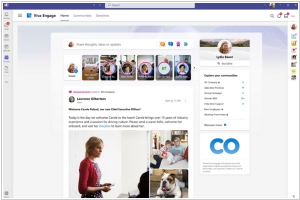
Microsoft has officially announced the discontinuation of Yammer, the enterprise social network that it acquired over a decade ago for $1.2 billion. Despite Microsoft's previous efforts to promote Yammer by integrating it into its core Office suite, the company has shifted its focus towards developing alternative communication tools like Microsoft Teams. In 2019, Microsoft integrated Yammer with Teams, and two years later, it introduced Viva—an "employee experience platform" designed to serve as a modern corporate intranet. Over the past months, Microsoft has been actively enhancing Viva, and in the previous year, it launched Viva Engage as an evolution of the Yammer Communities app.
2022. Microsoft wants to add Stories to corporate portals
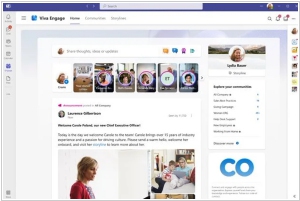
Microsoft is venturing into the enterprise realm by introducing Stories, a forthcoming feature within its Viva "employee experience" platform, aimed at bringing the popular snackable content format to the corporate world. While the Stories format, known for its ability to captivate audiences, may seem contradictory to the productivity-focused mindset of corporate customers subscribing to Viva, Microsoft claims otherwise. The company argues that there is a genuine interest in ephemeral photo and video slideshows within the workplace. According to Microsoft, these Stories provide a "fun, familiar way" for employees to maintain connections with their colleagues.
2022. Microsoft is elevating Viva from pure employee portal to job support platform starting with sales
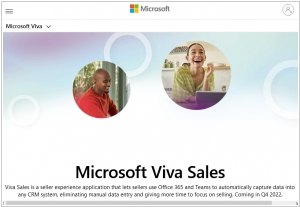
When Microsoft introduced Viva last year, it positioned the platform as an employee portal where individuals could access information such as parental leave policies and other internal communications related to company culture and policies. However, it appears that Microsoft has grander aspirations for Viva beyond being a typical employee intranet that provides essential employee information. Today, Microsoft announced the introduction of the first of potentially multiple job-specific features within Viva, beginning with sales. This tool is built on Office 365 and optimized for Microsoft Dynamics 365 CRM. By associating a customer's name or contact, Viva Sales can automatically retrieve documents, spreadsheets, presentations, emails, and other relevant materials into the CRM tool. It allows sales professionals to utilize the tools they already utilize and cherish on a daily basis, including email systems like Outlook, Word documents, PowerPoint presentations, and Teams. Microsoft will offer Viva Sales at no cost to its Microsoft Dynamic 365 customers.
2021. Microsoft launches employee experience platform Viva
Microsoft has introduced Viva, a new "employee experience platform" that reimagines the traditional intranet sites commonly provided by large companies to their employees. Viva encompasses essential features such as internal communication access, seamlessly integrated with SharePoint, Yammer, and other Microsoft tools. Moreover, Viva offers team analytics capabilities and integrates with LinkedIn Learning and other training content providers, including SAP SuccessFactors. Additionally, Microsoft has introduced Viva Topics, a feature designed for internal knowledge sharing within organizations. With Viva, Microsoft aims to enhance the overall employee experience by providing a comprehensive and integrated platform.
2018. SharePoint gets organization-wide news and content targeting
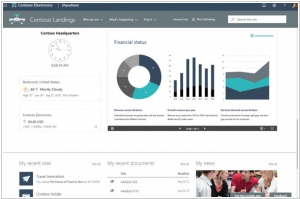
Microsoft has recently announced several enhancements for SharePoint and Office 365 sites, bringing new capabilities and functionalities. Among the notable updates is the introduction of a designated communication site that serves as the official news portal for the organization. This allows news posted on the portal to be easily identified with a special indicator, ensuring clear visibility on both mobile devices and the SharePoint home page. Additionally, a new feature enables the targeting of content to specific audiences based on their Active Directory (AD) Group membership, including dynamic groups. Moreover, SharePoint sites now have the ability to create mega-menus for navigation, facilitating improved user experiences and seamless site exploration. These advancements aim to enhance communication, personalization, and navigation within SharePoint and Office 365 sites.
2017. SharePoint 2016 finally added SharePoint Framework Support
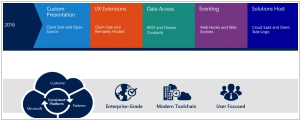
Microsoft's objective in launching SharePoint Framework into general availability in February was to attract a wider pool of developers to the SharePoint ecosystem. Now, with the introduction of SharePoint Feature Pack 2 (FP2), the company extends Framework support to users of SharePoint 2016. Framework serves as a page and web part model, offering comprehensive assistance for client-side SharePoint development, seamless integration with SharePoint data, and compatibility with open source tools. This release simplifies the process for SharePoint 2016 users and third-party developers to construct solutions centered around SharePoint.
2017. SharePoint Framework is generally available

Microsoft has introduced the SharePoint Framework, empowering developers and administrators to construct and deploy components that are utilized by Office 365 users within their production environments. This advancement entails leveraging web technologies to create agile, responsive, and notably mobile-friendly applications on SharePoint. While SharePoint has served as an application and development platform for a considerable duration, the release of the Framework marks a significant stride in enhancing the developer experience. Historically described as unwieldy and challenging, the SharePoint Framework introduces improvements that address these concerns.
2016. Microsoft connects SharePoint Team Sites to Office 365 Groups
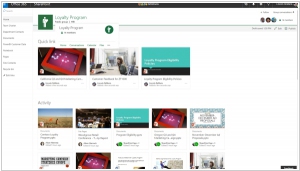
Microsoft is rolling out the integration of SharePoint and Office 365 team sites, introducing a new feature that enables the creation of interconnected SharePoint Online team sites within seconds. This integration simplifies the process as follows: Whenever an Office 365 Group is created, the service automatically generates a SharePoint team site. The appearance of the site can be customized by the team site administrator and includes various elements such as pages, lists, libraries, and team news. SharePoint team sites serve as collaborative spaces where teams can effectively communicate, share documents, and collaborate on projects. They are user-friendly and facilitate the creation of dedicated sites for each project undertaken by the team. Moreover, team sites are easily accessible across multiple devices, making them suitable for mobile workers as well.
2016. Microsoft released SharePoint for Android
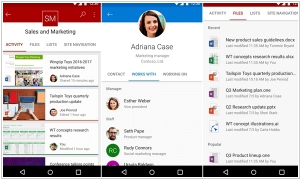
Despite Microsoft's withdrawal from actively competing in the mobile OS market for the past two years, the company has been notably sluggish in releasing Android apps. However, Microsoft has finally unveiled its SharePoint mobile client specifically designed for Android smartphones and tablets. This application offers users the ability to collaborate within team sites and access documents stored in SharePoint across various categories, including Sites, Links, and People. To utilize the SharePoint app, organizations must have an Office 365 subscription that includes SharePoint Online. Support for SharePoint Server 2013 and SharePoint 2016 will be incorporated at a later stage. Earlier this year, Microsoft released SharePoint mobile apps for iOS and Windows Phone, with the latter app still being in the preview stage.
2016. Microsoft brings SharePoint to iOS
Microsoft has introduced a new mobile application for SharePoint users, designed to provide access to a company's SharePoint-powered intranet portal and its content on smartphones and tablets. Initially available on iOS devices such as iPhones and iPads, the app will be extended to Android and Windows platforms by the end of the year, according to Microsoft. The app is compatible with both SharePoint Online in Office 365 and SharePoint Server 2013 or 2016 in on-premises or hybrid environments. It includes a Sites tab that enables users to visit their frequently accessed SharePoint sites, view recent activity, access files, lists, pages, and other content on those sites. Additionally, the app integrates with other Microsoft mobile applications, allowing seamless transitions between apps. For instance, clicking on an Office document in the SharePoint app will open the corresponding Office mobile app, while viewing a document library on a team site will redirect users to the OneDrive mobile app for iOS.


